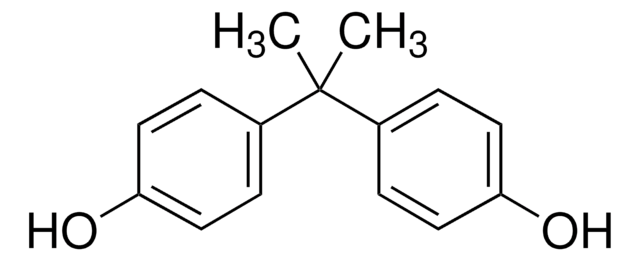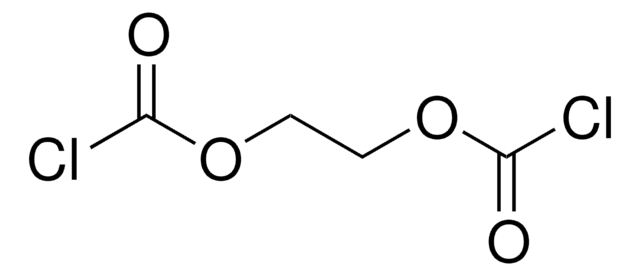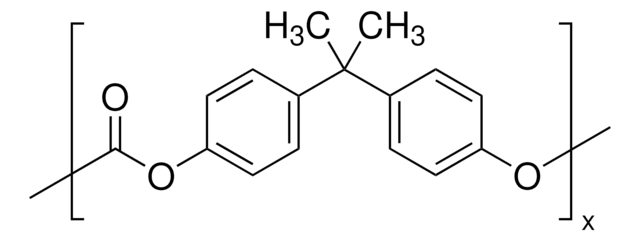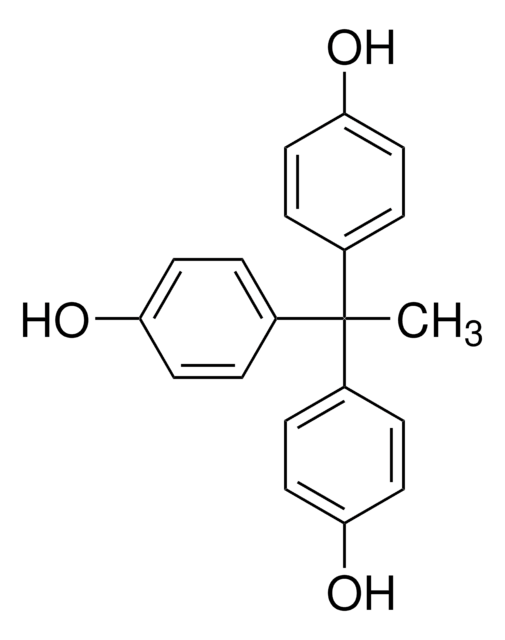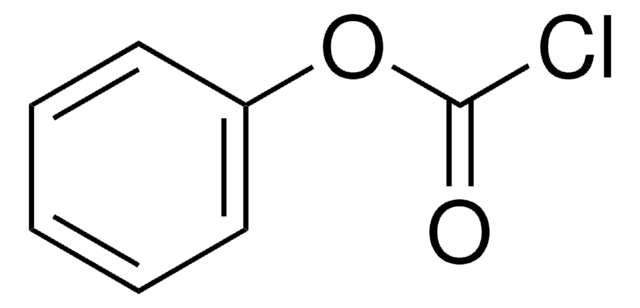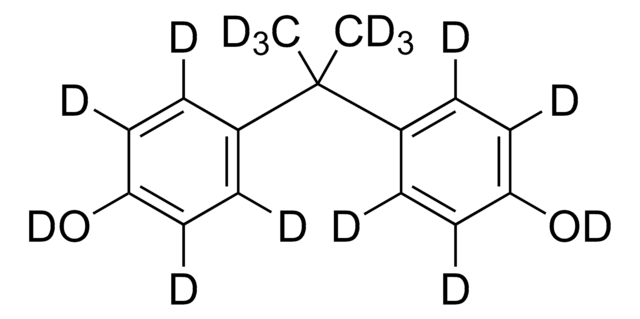375071
Bisphenol A bis(chloroformate)
95%
About This Item
Prodotti consigliati
Livello qualitativo
Saggio
95%
Punto di fusione
90-92 °C (lit.)
Gruppo funzionale
chloro
Temperatura di conservazione
2-8°C
Stringa SMILE
CC(C)(c1ccc(OC(Cl)=O)cc1)c2ccc(OC(Cl)=O)cc2
InChI
1S/C17H14Cl2O4/c1-17(2,11-3-7-13(8-4-11)22-15(18)20)12-5-9-14(10-6-12)23-16(19)21/h3-10H,1-2H3
MMWCQWOKHLEYSP-UHFFFAOYSA-N
Categorie correlate
Descrizione generale
Applicazioni
- in the preparation of novel electro-optic (EO) polycarbonates containing two different kinds of nonlinear optical (NLO) chromophores with tricyanofurane (TCF) electron acceptor
- in the preparation of novel fluorine-containing poly(carbonate-block-siloxanes)
- as coupling reagent in the synthesis of block-copolymers containing poly(2,6-dimethyl-1,4-phenylene oxide) (PPO) and polycarbonate of bisphenol A (PC) segments
Avvertenze
Danger
Indicazioni di pericolo
Classi di pericolo
Acute Tox. 3 Oral - Eye Dam. 1 - Skin Corr. 1B
Codice della classe di stoccaggio
6.1A - Combustible acute toxic Cat. 1 and 2 / very toxic hazardous materials
Classe di pericolosità dell'acqua (WGK)
WGK 3
Punto d’infiammabilità (°F)
Not applicable
Punto d’infiammabilità (°C)
Not applicable
Dispositivi di protezione individuale
Eyeshields, Faceshields, Gloves, type P2 (EN 143) respirator cartridges
Scegli una delle versioni più recenti:
Possiedi già questo prodotto?
I documenti relativi ai prodotti acquistati recentemente sono disponibili nell’Archivio dei documenti.
I clienti hanno visto anche
Il team dei nostri ricercatori vanta grande esperienza in tutte le aree della ricerca quali Life Science, scienza dei materiali, sintesi chimica, cromatografia, discipline analitiche, ecc..
Contatta l'Assistenza Tecnica.